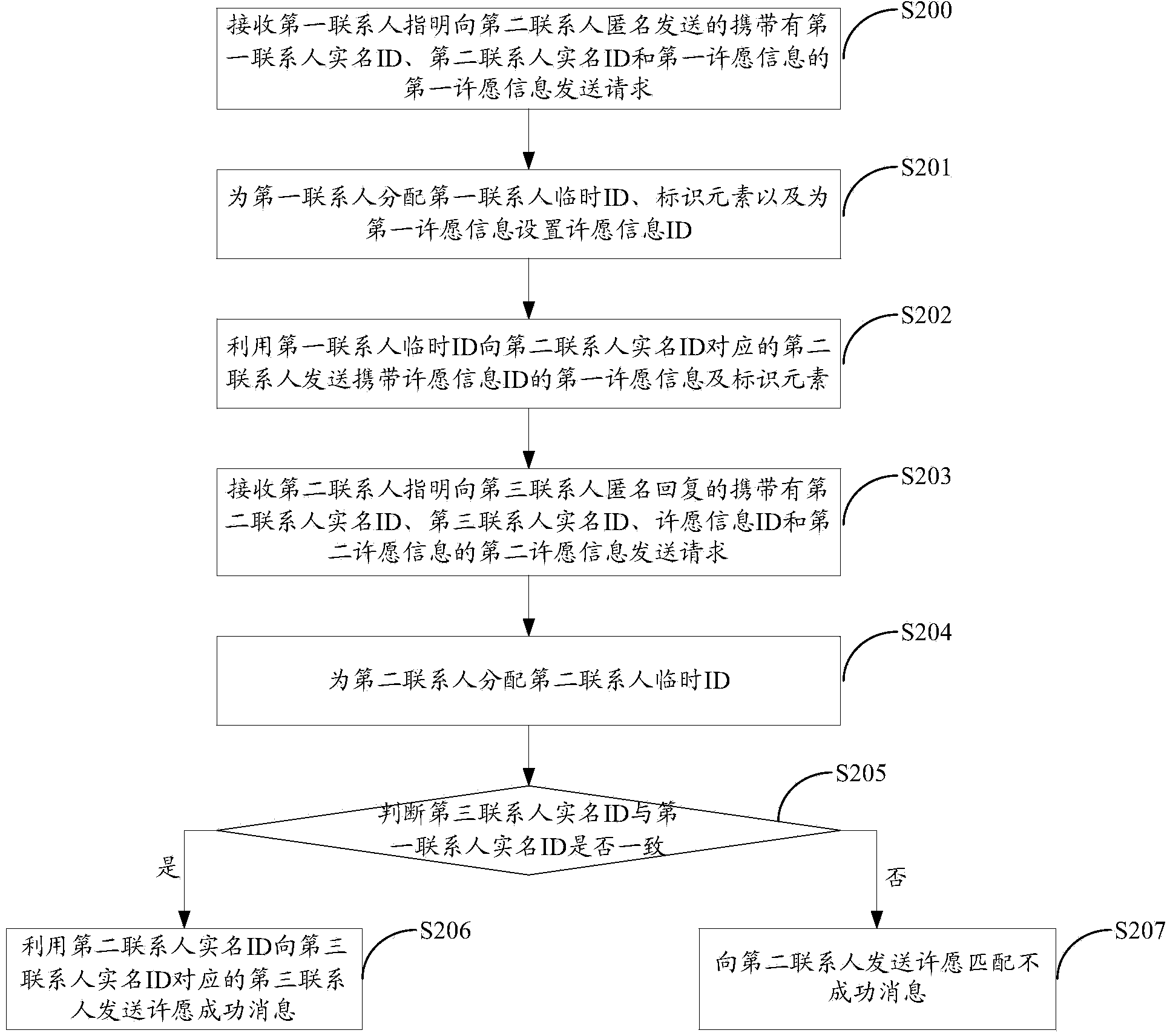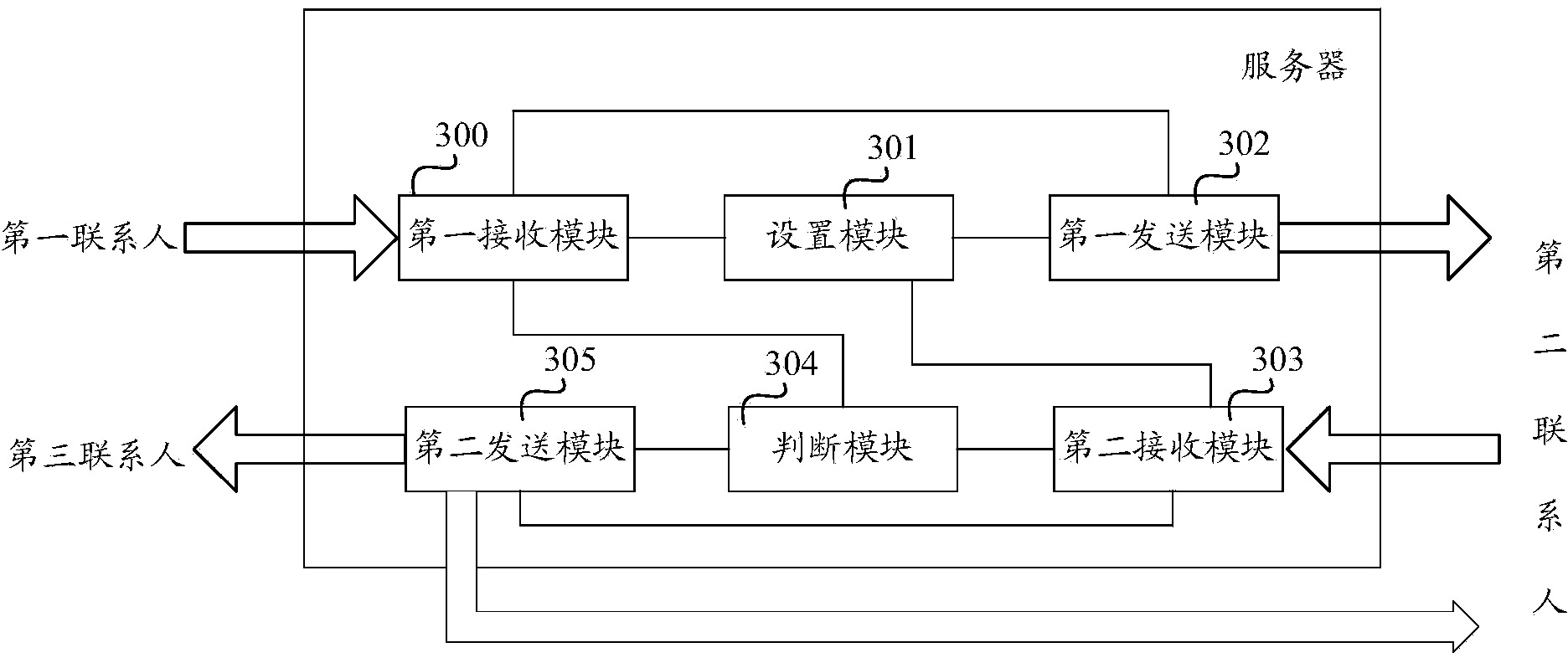Method and server for matching wishing information anonymously transmitted by single party
A matching method, a unilateral technology, applied in the Internet field, can solve the problems that the two parties in the communication cannot speak freely, and the communication system cannot meet the needs of providing confidential topics, so as to achieve the effect of enhancing feelings, expressing freely, and communicating authentically
- Summary
- Abstract
- Description
- Claims
- Application Information
AI Technical Summary
Problems solved by technology
Method used
Image
Examples
Embodiment Construction
[0023] Exemplary embodiments of the present disclosure will be described in more detail below with reference to the accompanying drawings. Although exemplary embodiments of the present disclosure are shown in the drawings, it should be understood that the present disclosure may be embodied in various forms and should not be limited by the embodiments set forth herein. Rather, these embodiments are provided for more thorough understanding of the present disclosure and to fully convey the scope of the present disclosure to those skilled in the art.
[0024] figure 1 A flowchart showing a method for matching wishing information transmitted in a unilaterally anonymous manner according to an embodiment of the present invention. Such as figure 1 As shown, the method includes the following steps:
[0025] Step S100, receiving a request for sending a first wish information from a first contact indicating to anonymously send the first wish information to a second contact.
[0026] ...
PUM
 Login to View More
Login to View More Abstract
Description
Claims
Application Information
 Login to View More
Login to View More - R&D
- Intellectual Property
- Life Sciences
- Materials
- Tech Scout
- Unparalleled Data Quality
- Higher Quality Content
- 60% Fewer Hallucinations
Browse by: Latest US Patents, China's latest patents, Technical Efficacy Thesaurus, Application Domain, Technology Topic, Popular Technical Reports.
© 2025 PatSnap. All rights reserved.Legal|Privacy policy|Modern Slavery Act Transparency Statement|Sitemap|About US| Contact US: help@patsnap.com



